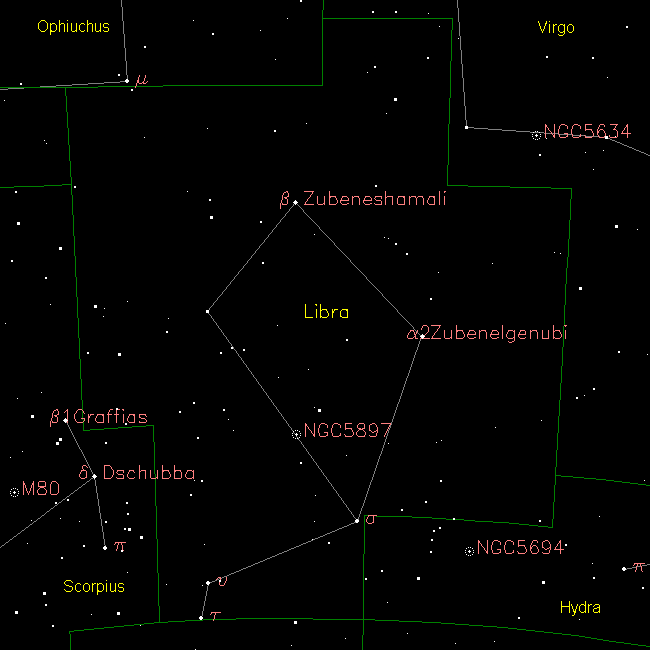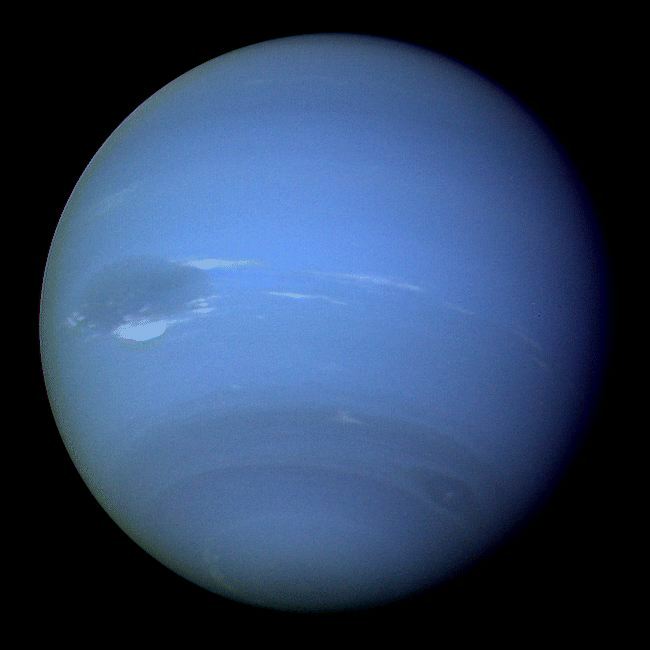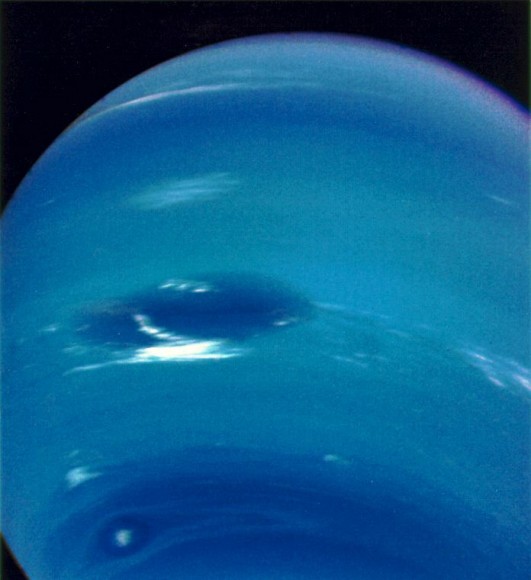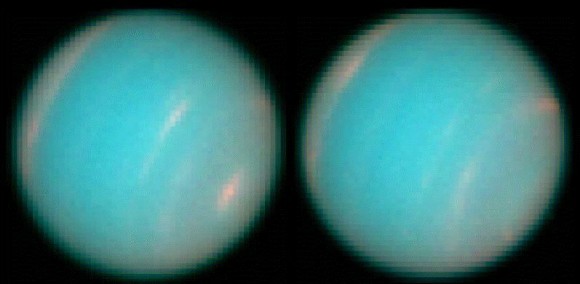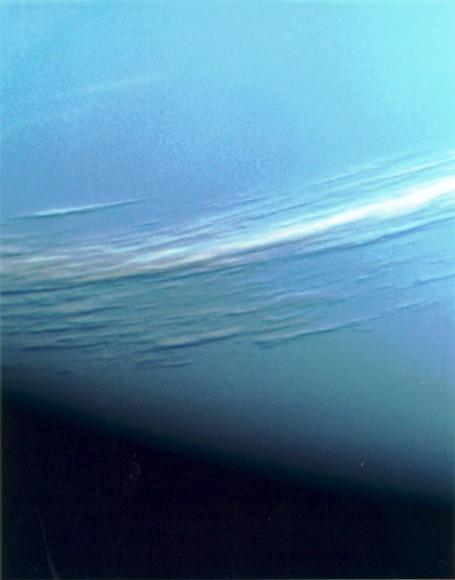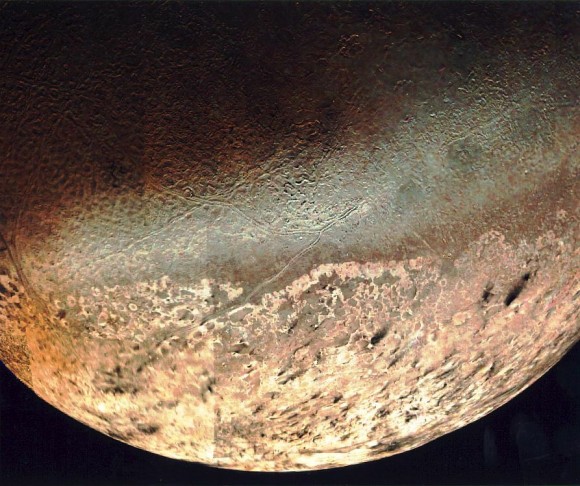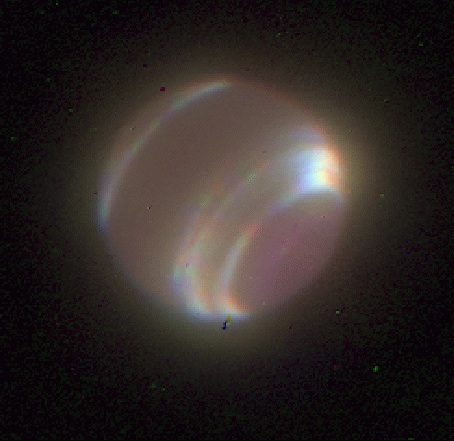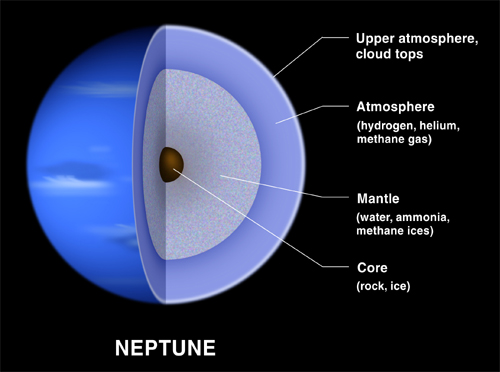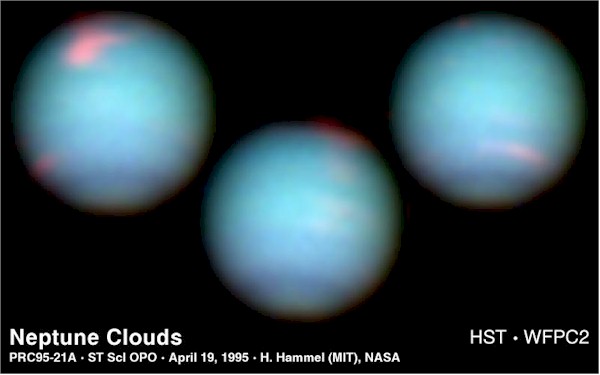[/caption]
Libra is a constellation of the zodiac, positioned on the ecliptic plane between between Virgo to the west and Scorpius to the east. It is a faint group of stars and not easy to recognize. Its two major stars once once represented the claws of Scorpius. How and when it came to be recognized by its present designation is unknown. Libra covers approximately 538 square degrees of sky and contains 6 stars in its asterism. There are 46 Bayer Flamsteed designated stars within Libra and it is bordered by Serpens Caput, Virgo, Hydra, Centaurus, Lupus, Scorpius and Ophiuchus. Libra can be seen by all observers at latitudes between +65° and ?90° and is best seen at culmination during the month of June.
In mythology, the Alpha and Beta stars of Libra once represented Chelae Scorpionis, the northern and southern claws of the Scorpion. Who knows exactly where and when it became depicted as a set of scales, but the Romans identified it with the scales held by Astraea, the goddess of justice. They believed the Moon was in Libra when Rome was founded and the astrological sign represented balance because this is where the Sun was housed during autumnal equinox. Oddly enough, Libra is the only astrological symbol that doesn’t depict some type of living creature.
Once you’ve located it, let’s take a binocular tour of Libra, beginning with Alpha Librae – Zubenelgenubi – the “a” symbol on our map. Despite its alpha designation, it’s not the brightest star here, but what you’ll find here is a wonderful, visual double star. Alpha Librae “The Southern Claw” is located approximately 77 light years from the Sun, and the components are easily separated with even the slightest visual aid. Look for a beautiful yellow coloration to the spectral type A3 primary star and a slight blue tinge to the far fainter type F4 companion. Zubenelgenubi is close to the ecliptic so it can be easily occulted by the Moon!
Now, hop to Beta Librae – Zubeneschamali – the “B” symbol on our map. “The Northern Claw” is actually the brightest star in Libra and also one of the furthest away at about 160 light years from Earth. Beta Librae is a blue dwarf star of spectral type B8, what would appear to be a rather ordinary main sequence star – but take a really close look in binoculars. Does it appear a little green to you? Zubeneschamali is running a high temperature – more than twice that of our own Sun – produces light with a simple spectrum. This makes it a perfect candidate for examining interstellar gas and dust which lay between us and it – but its rapid hydrogen fusion also causes it to appear a little more green than other stars. A color rarely seen in stars! What’s more, Beta Librae spins about 100 times faster than our Sun and shines about 130 brighter. Not bad for a star that not even as evolved as Sirius!
Point your binoculars further south for Sigma Librae – the “O” symbol with the little flag on our map. Its traditional name is Zubenhakrabi – a cool class M (M3) rather-luminous red giant. Located approximately 292 light years from our solar system, Sigma is rather special – a prototype of its own group of ultra-small-amplitude variables which are called Sigma Librae variable stars. What are they? Pulsing red giants, of course! It doesn’t change its brightness much, maybe only 0.16 magnitudes over a 20-day period, but knowing you’re looking at dying solar mass star, with a dead helium core, fueled by internal nuclear-burning shells of helium and hydrogen is still undeniably fascinating! What’s Zubenhakrabi future like? Chances are it will just eventually become a Mira-type variable star that will eventually shed its outer skin, leaving its now-content carbon-oxygen center to become just another of the white dwarf stars of the night!
Time to get out the telescope and head for NGC 5694 (RA 14:39:36.5 Dec -26:32:18). This 10th magnitude, irregularly shaped globular cluster was discovered by Sir William Herschel in 1784 and is one of the more remote globular clusters of the Milky Way Galaxy at a distance of about 113 thousand light years. If you find it difficult to resolve, you’d be right. Its brightest stars average about magnitude 16 and so far none of them have been discovered to be variable. Why bother if it is so dim? Because this globular cluster is a curiosity! It’s moving… and it’s moving fast. According to studies, NGC 5694 can either be a hyperbolic orbit or may be elevated into a higher energy orbit during its evolution. It is possible that NGC 5694 may have once belonged to the Magellanic Clouds. Thanks to work done by Lee (et al) who discovered one red giant star, we know that it has a “unique chemical abundance pattern” and an “an extragalactic origin”. No wonder it’s so faint….
Need a big telescope challenge? Then try NGC5792 (RA 14:58.4 Dec -01:05). At around magnitude 12, it’s going to take some dark sky to catch this nearly edge-on spiral galaxy, but it is worth your time and trouble. As part of the Herschel catalog, you’ll find a distracting star on the western edge, but very pretty spiral galaxy structure with a bright nucleus await you. At 85 million light years away, it still shows some very nice form to large aperture.
Before you put away your telescope, try NGC 5903/5898 (RA 15:18.6 Dec -24:04). This binary elliptical galaxy pair is quite achievable in an 8″ telescope with dark skies and good seeing conditions. You’ll find them about three degrees northeast of Sigma, and just north of a pair of 7th magnitude stars. While northernmost NGC 5903 seems to be nothing more than a faint elliptical with a brighter concentration toward the center and an almost identical elliptical – NGC 5898 – to the southwest, you’re probably asking yourself… Why the big deal over two small ellipticals? First off, NGC 5903 is Herschel III.139 and NGC 5898 is Herschel III.138…two more to add to your studies. And second? The Very Large Array has studied this galaxy pair in the spectral lines of neutral hydrogen. The brighter of the pair, NGC 5898, shows evidence of ionized gas which has been collected from outside its galactic realm – while NGC 5903 seems to be running streamers of material toward its neighbor. A double-galaxy, double-accretion event! But there’s more… Look to the southeast and you’ll double your pleasure and double your fun as you discover two double stars instead of just one! Sometimes we overlook field stars for reasons of study – but don’t do it tonight. Even mid-sized telescopes can easily reveal this twin pair of galaxies sharing “their stuff,” as well as a pair of double stars in the same low power field of view. (Psst…slim and dim MCG 043607 and quasar 1514-241 are also here!) Ain’t it grand?
Tip the “scales” in your favor if you have a big telescope and get a good star chart. There’s lots more in Libra than you think!

